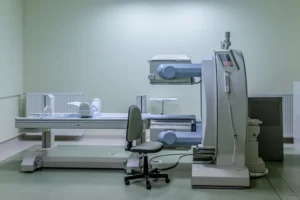The Ups and Downs of an Upturned Nose: Pros and Cons
- Updated on: Feb 29, 2024
- 8 min Read
- Published on Jun 28, 2023

An upturned nose is a type of nose shape that is characterized by a tip that is tilted upwards. This nose shape is also commonly referred to as a “celestial nose,” “concave nose,” or “button nose.” Upturned noses are often associated with a youthful appearance and are commonly seen in individuals with smaller facial features.
The Significance of an Upturned Nose in Facial Aesthetics
An upturned nose can play a significant role in facial aesthetics. It can help to create balance and harmony in the face, particularly in individuals with smaller or more delicate facial features. An upturned nose can also help to create the illusion of a more defined jawline and can make the eyes appear larger.
However, the significance of an upturned nose in facial aesthetics is not always positive. For some individuals, an upturned nose can create an unbalanced appearance, particularly in those with larger facial features. In some cases, an upturned nose can also create the illusion of a shorter or more rounded face shape, which may not be desirable for some individuals.
The Purpose of the Article
The purpose of this article is to provide an in-depth look at the ups and downs of an upturned nose. We will explore the benefits and drawbacks of this nose shape, as well as the different treatment options available to individuals who are unhappy with their upturned noses. Our goal is to provide readers with a comprehensive understanding of this nose shape and help them make informed decisions about their facial aesthetics.
The Pros of an Upturned Nose
An upturned nose, also known as a concave nose, is a nose that has a slight upward tilt at the tip. While some people may consider this type of nose unattractive, there are many advantages to having an upturned nose. In this section, we will explore some of the pros of having an upturned nose.
Improved Breathing
One of the major benefits of having an upturned nose is that it can improve your breathing. This is because an upturned nose creates more space in the nasal passages, which allows air to flow more freely through the nose. This can be especially beneficial for people who suffer from conditions such as sleep apnea, snoring, or allergies.
Attractive Appearance
Another advantage of an upturned nose is that it can be very attractive. Many people consider an upturned nose to be a desirable feature, as it can give the face a more youthful and feminine appearance. Additionally, an upturned nose can help to balance out other facial features, such as a strong chin or jawline.
Better Facial Symmetry
An upturned nose can also improve facial symmetry. When the nose is slightly upturned, it can create a more harmonious balance between the upper and lower portions of the face. This can make other facial features, such as the eyes and mouth, appear more balanced and proportionate.
Positive Psychological Impact
Finally, an upturned nose can have a positive psychological impact on a person. Many people who have undergone rhinoplasty to create an upturned nose have reported feeling more confident and self-assured after the procedure. This is because an upturned nose can give the face a more youthful and attractive appearance, which can boost a person’s self-esteem and self-confidence.
The Cons of an Upturned Nose
While an upturned nose can offer many benefits, it’s important to note that there are some downsides as well. In this section, we will discuss the cons of an upturned nose, including medical issues, negative social perception, difficulty in wearing glasses, and limited cosmetic versatility.
Medical Issues
One of the main drawbacks of an upturned nose is that it can lead to medical issues. For example, people with upturned noses may experience difficulty breathing due to the narrowing of their nasal passages. This can lead to snoring and other breathing problems that can impact their quality of life.
Additionally, those with upturned noses may be more prone to sinus infections and other respiratory problems due to the shape of their nose. This is because an upturned nose can make it more difficult for mucus to drain properly, which can lead to blockages and infections.
Negative Social Perception
Unfortunately, people with upturned noses may also experience negative social perceptions. Some people may view an upturned nose as less attractive or less desirable than other nose shapes, which can impact their self-esteem and confidence.
Moreover, individuals with upturned noses may also be more likely to be stereotyped or negatively judged based on their appearance. This can be particularly difficult for those who have already experienced discrimination or prejudice based on other factors such as race, gender, or sexuality.
Difficulty in Wearing Glasses
Another downside of an upturned nose is that it can make it difficult to wear glasses. Because an upturned nose has a more pronounced curve than other nose shapes, glasses may slip down more easily or not fit properly. This can be frustrating for those who need to wear glasses for vision correction or other reasons.
Limited Cosmetic Versatility
Finally, those with upturned noses may also have limited cosmetic versatility. This is because an upturned nose is a distinctive and prominent feature, which can make it difficult to change its appearance without drastically altering the overall look of the face. As a result, people with upturned noses may be limited in their cosmetic options and may not be able to achieve the desired look through traditional cosmetic procedures such as rhinoplasty.
Rhinoplasty for an Upturned Nose
An upturned nose can be a source of both aesthetic and functional concerns. Rhinoplasty, commonly known as a nose job, is a surgical procedure that can be used to address these issues. There are two types of rhinoplasty procedures that can be used for an upturned nose: closed rhinoplasty and open rhinoplasty. In addition to surgical options, there are also non-surgical options, including the use of fillers and Botox. Let’s take a closer look at these options.
Surgical Procedures
Closed Rhinoplasty
Closed rhinoplasty, also known as endonasal rhinoplasty, is a minimally invasive procedure that involves making incisions inside the nostrils. This technique is ideal for patients who have mild to moderate concerns with their upturned noses. During the procedure, the surgeon will reshape the cartilage and bone in the nose to achieve the desired aesthetic and functional results. Closed rhinoplasty is associated with less swelling and a faster recovery time compared to open rhinoplasty.
Open Rhinoplasty
Open rhinoplasty, also known as external rhinoplasty, is a more invasive procedure that involves making incisions on the outside of the nose. This technique is ideal for patients who have more significant concerns with their upturned nose, such as a deviated septum or structural abnormalities. During the procedure, the surgeon will lift the skin and soft tissue to gain better access to the underlying structures of the nose. This allows for more precise reshaping of the nose. Open rhinoplasty is associated with more swelling and a longer recovery time compared to closed rhinoplasty.
Non-Surgical Options
Fillers
Fillers, such as hyaluronic acid or calcium hydroxylapatite, can be used to improve the appearance of an upturned nose without surgery. This technique involves injecting the filler into the nose to smooth out any irregularities and create a more desirable shape. Fillers are a non-permanent option, typically lasting anywhere from six months to two years, and may need to be repeated to maintain results.
Botox
Botox, a neurotoxin that temporarily paralyzes muscles, can be used to address certain functional concerns of an upturned nose, such as excessive flaring of the nostrils. Botox is injected into the muscles around the nostrils, reducing their activity and allowing the nose to relax into a more natural position. This technique is a non-permanent option, typically lasting three to four months, and may need to be repeated to maintain results.
Pre-Operative Considerations
Before undergoing any surgical procedure, it is important to consider various aspects of your physical and emotional health, as well as your expectations. This is especially true for rhinoplasty, or nose surgery, which is a complex and intricate procedure that can have a significant impact on your appearance and overall well-being. In this section, we will explore the key pre-operative considerations for rhinoplasty, including physical health, emotional health, and realistic expectations.
Physical Health
One of the most important factors to consider before undergoing rhinoplasty is your physical health. This includes your overall health status, any existing medical conditions, and any medications or supplements you are currently taking. It is important to inform your surgeon about any medical issues you have, such as allergies, asthma, diabetes, high blood pressure, or heart disease. These conditions can affect the outcome of your surgery, and your surgeon may need to take special precautions or adjust your treatment plan accordingly.
You should also disclose any medications or supplements you are taking, as some of them can increase the risk of bleeding or other complications during and after surgery. For example, blood thinners, such as aspirin, ibuprofen, and warfarin, should be avoided for at least two weeks before and after surgery to minimize the risk of bleeding. Your surgeon may also recommend that you stop smoking, as smoking can interfere with the healing process and increase the risk of complications.
Emotional Health
In addition to physical health, emotional health is also an important consideration before undergoing rhinoplasty. This is because the procedure can have a significant impact on your self-image, self-esteem, and overall emotional well-being. It is important to have realistic expectations and a clear understanding of the potential risks, benefits, and limitations of the procedure. You should also be prepared for the recovery process, which can be uncomfortable and require a significant amount of time and effort.
It is also important to address any underlying emotional issues or concerns before undergoing rhinoplasty. This may include body dysmorphic disorder (BDD), which is a psychological condition characterized by a preoccupation with perceived flaws or defects in one’s appearance. People with BDD may have unrealistic expectations or a distorted view of their nose, which can affect their satisfaction with the results of the surgery. It is important to discuss any concerns or fears you have with your surgeon or a mental health professional before proceeding with the procedure.
Realistic Expectations
Finally, having realistic expectations is critical before undergoing rhinoplasty. This means understanding what the procedure can and cannot achieve, and having a clear idea of what you want to achieve with the surgery. Rhinoplasty can improve the appearance of the nose, correct breathing problems, and enhance facial harmony, but it cannot make you look like someone else or guarantee a perfect result. It is important to have open and honest communication with your surgeon about your goals and expectations and to listen carefully to their advice and recommendations.
Your surgeon may use computer imaging or other tools to help you visualize the potential outcomes of the surgery, but keep in mind that these are only simulations and the actual results may vary. It is also important to be patient and realistic about the recovery process, which can take several weeks or months to fully heal. By having realistic expectations and a clear understanding of the risks and benefits of rhinoplasty, you can make an informed decision about whether this procedure is right for you.
Post-Operative Care
Follow-Up Visits
After an upturned nose rhinoplasty, it is important to attend all scheduled follow-up visits with your surgeon. These appointments are crucial for monitoring your healing progress and ensuring that there are no complications. During these visits, your surgeon will examine the surgical site, remove any sutures or dressings, and provide you with any necessary instructions or medications. It is essential to follow all of your surgeon’s instructions closely to ensure the best possible results and minimize the risk of complications.
Healing Process
The healing process after an upturned nose rhinoplasty can vary depending on the individual and the extent of the procedure. Generally, the initial healing period lasts around 7-10 days, during which time you may experience some pain, swelling, and bruising around the nose and eyes. Your surgeon may prescribe pain medication or suggest using cold compresses to help manage these symptoms.
After the initial healing period, the swelling will gradually subside, and you will begin to see the results of the procedure. However, it can take several months for the nose to fully heal and for the final results to become apparent. It is important to be patient and follow all of your surgeon’s instructions during this time to ensure optimal healing.
Results Expectations
The results of an upturned nose rhinoplasty can vary depending on the individual’s anatomy and the extent of the procedure. However, the procedure can help to improve the appearance and function of the nose, leading to a more balanced and aesthetically pleasing facial profile.
It is important to have realistic expectations for the results of the procedure. Your surgeon will work closely with you to develop a treatment plan that is tailored to your individual needs and goals. While rhinoplasty can produce dramatic results, it is important to remember that the goal is to achieve a natural-looking outcome that complements your facial features.












